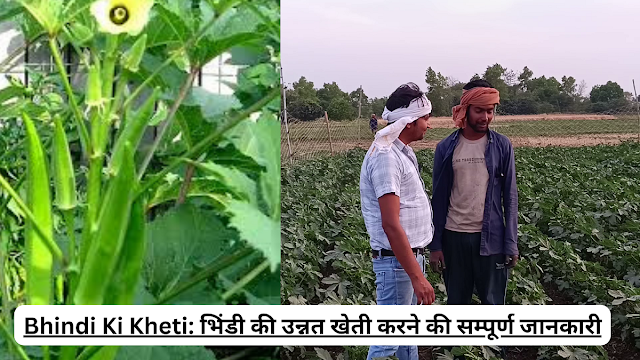Ladyfinger, also known as okra or bhindi, is a popular and nutritious vegetable that can be grown successfully with careful planning and the right choice of variety. One such excellent choice for ladyfinger cultivation is the Namdhari breed, known for its quality and yield. Let's explore how to cultivate this crop successfully using the Namdhari variety.
Choosing the Namdhari Breed
The Namdhari breed of ladyfinger is favored by many farmers for its superior quality and high yield potential. This variety is known to produce tender and flavorful pods, making it ideal for both home gardens and commercial cultivation. When selecting seeds, opt for certified Namdhari seeds from reputable suppliers to ensure optimal results.
Ideal Planting Time
For successful ladyfinger cultivation with the Namdhari breed, timing is crucial. In regions with a winter season, such as India, the ideal planting time for this crop is in January or February. This timing allows the plants to establish themselves during the cooler months before the onset of the warmer season.
Cultivation Process
Seed Sowing: Begin by sowing Namdhari ladyfinger seeds in well-prepared soil during January or February. Ensure the soil is fertile, well-draining, and enriched with organic matter.
Seedling Stage: The seeds will germinate within a few days under optimal conditions. After about two months of growth, when the seedlings have developed a robust root system and healthy foliage, it's time to transplant them into the main field or garden.
Transplanting: Choose a sunny location with good air circulation for transplanting the seedlings. Space the plants about 12-18 inches apart to allow for proper growth and development.
Watering and Care: Ladyfinger plants require regular watering, especially during the flowering and fruiting stages. Ensure the soil remains consistently moist but not waterlogged. Mulching around the plants can help retain soil moisture and suppress weeds.
Fertilization: Apply a balanced fertilizer containing nitrogen, phosphorus, and potassium before planting and during the growing season to support healthy growth and abundant fruiting.
Pest and Disease Management: Keep an eye out for common pests like aphids, fruit borers, and spider mites, which can affect ladyfinger plants. Use organic or recommended insecticides and fungicides to manage pest and disease outbreaks.
Harvesting
With the Namdhari breed, ladyfinger pods can typically be harvested approximately 45-50 days after transplanting. Harvest the pods when they are tender and about 3-4 inches in length for the best flavor and texture. Regular harvesting encourages continuous production throughout the growing season.
Conclusion
Cultivating ladyfinger crops with the Namdhari breed can be a rewarding experience for farmers and gardeners alike. By following proper planting practices, timely care, and effective pest management, you can enjoy a bountiful harvest of high-quality ladyfinger pods. Consider experimenting with this exceptional variety in your next planting season to reap the benefits of growing Namdhari ladyfinger. Happy gardening!

